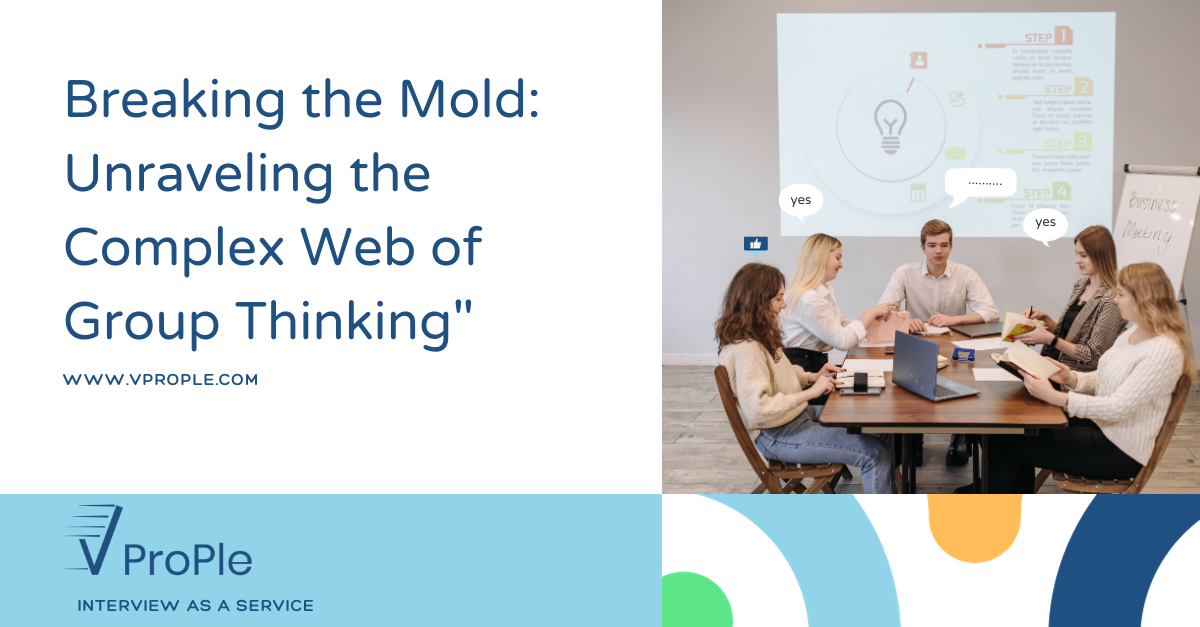This website use cookies to help you have a superior and more relevant browsing experience on the website.
Breaking the Mold: Unraveling the Complex Web of Group Thinking
-
17/11/2023

In a world where people often work together
and exchange ideas, group thinking is pretty common. It means that when a bunch
of people collaborate, they can come up with cool ideas and feel more connected. However, there’s a downside too. Group thinking can sometimes stop
individual creativity and careful thinking. In this blog post, we’ll talk about
group thinking, looking at both the good and bad sides, and discuss ways how to
overcome groupthink pitfalls.
Group thinking occurs when individuals
within a group prioritize harmony and conformity over independent thought. The
desire for acceptance and a fear of dissent can lead group members to conform
to prevailing opinions, potentially limiting the diversity of perspectives.
|
Benefits |
Pitfalls |
|
Collaborative |
Conformity Over |
|
Social Cohesion: |
Confirmation |
|
Diverse |
Dominance of |
|
Enhanced |
Conflict and |
|
Increased |
Lack of |
Breaking Free from Group Thinking:
1. Encourage Diverse Perspectives:
Actively seek out and welcome diverse
perspectives within the group. Create an environment where individuals feel
comfortable expressing dissenting opinions without fear of retribution.
2. Foster a Culture of Open Communication:
Establish a culture that values open communication and constructive feedback. Encourage individuals to voice their thoughts and concerns, even if they differ from the majority.
3. Assign Devil’s Advocates:
Designate someone within the group to play the role of a devil’s advocate. This individual can challenge prevailing opinions and stimulate critical thinking, helping the group avoid complacency.
In the complicated world of start-ups, it’s
essential to strike the right balance. Working together can result in
impressive accomplishments, but it’s just as vital to encourage different ways
of thinking. By grasping how group thinking works and using strategies to avoid
its limitations, we can create a path for decision-making that is more
creative, welcoming, and successful.


